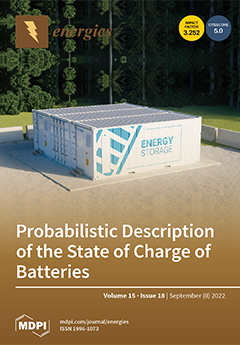In order to fulfill the commitment of China to achieve carbon peak by 2030 and carbon neutrality by 2060, all industries have been taking their respective carbon reduction actions. The transportation industry accounts for 11% of CO
2 emission of the whole society,
[...] Read more.
In order to fulfill the commitment of China to achieve carbon peak by 2030 and carbon neutrality by 2060, all industries have been taking their respective carbon reduction actions. The transportation industry accounts for 11% of CO
2 emission of the whole society, and its energy conservation and carbon reduction benefit is of great significance to the national carbon reduction process. New energy vehicles are undoubtedly one of the most important means of carbon emission reduction in the transportation sector. However, electric vehicles still have CO
2 emissions, as the fossil fuel use comes from upstream power. To systematically and comprehensively evaluate the CO
2 emissions of HEV, PHEV and BEV in the whole process, this study introduces the life-cycle method to research on the past and current situations, and predict future scenarios for ICEV and EV light-duty vehicles at the national and regional levels, by deeply analyzing the generation mix and generating efficiency from the WTT stage, and fuel economy from the TTW stage. The study shows that compared with ICEV, HEV and PHEV could reduce around 30% of CO
2 emissions. Currently, BEV could reduce 37% of CO
2 emission in the region where the proportion of coal-fired power is high, and 90% of CO
2 emission in the region where the proportion of hydro power is high. This study discusses the impact of the proportion of renewable energy application on the carbon emissions from electric vehicles, analyzes the environmental benefits of promoting electric vehicles in different regions, and lays a foundation for the promotion strategy of electric vehicles for different regions in the future.
Full article





